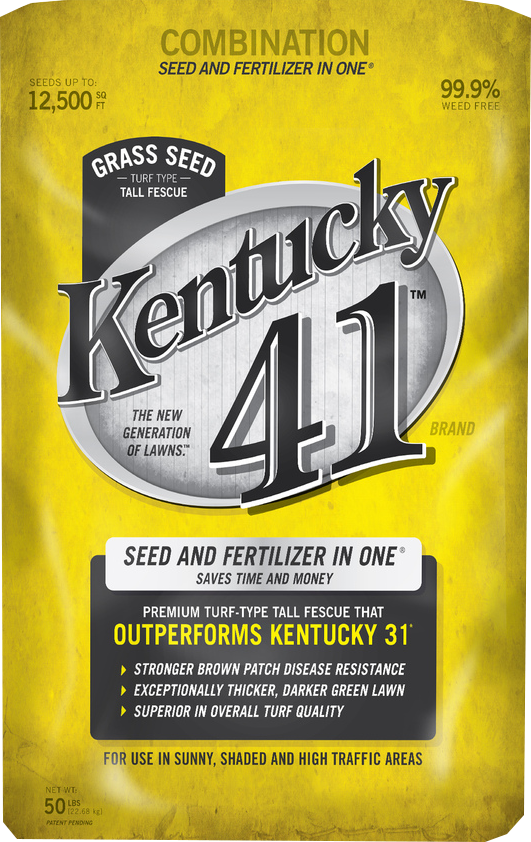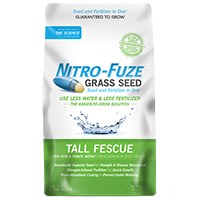
Keep Watering
Lawns need lots of water when it’s dry out even in the fall. Make sure to water deeply enough to reach the roots. One inch of water per week is an ideal amount, but it is important you don’t soak your lawn. Try our one-time easy solution to confirm your lawn receives the proper amount of water.
Dethatch
The removal of thatch helps maintain a healthy lawn. Decomposing grass, stems, dead roots and yard debris is considered thatch. It prevents water, sun, and fertilizer from reaching the roots. It is also a place for disease and insects to hide. Be sure to remove from your lawn anytime thatch is present.
Aerate
This is the process of puncturing numerous holes in the ground with either a rod or an automatic machine at a depth of 2 to 3 inches. Once you are finished, it is a great time to fertilize or overseed to improve the overall health and beauty of your lawn. Top-dressing, after aerating, with organic material like compost or peat moss improves soil structure for stronger turf in the long run. Aerating is always a good idea when you have soil compaction, as it is extremely effective in loosening the soil. Aeration creates a healthy root zone by increasing air space and allows water and fertilizer penetration to reach the roots. Be sure to give your lawn time to repair before cool season dormancy occurs. For more information, check out our article: Fall is Fix-Up Time.
Apply a Top Dressing
Top-dress your lawn by applying a thin layer of topsoil to your existing turf. We suggest using Schultz Premium Top Soil. By adding topsoil, the organic matter is increased, which in turn makes your lawn healthier and protected so it can survive the cool winter weather. Make sure you have dethatched and/or aerated your lawn prior to applying top dressing. Then work the topsoil into your turf by raking it in.
Overseed
Adding grass seed to your current lawn increases overall appearance and thickens your yard. To overseed, first mow the lawn short and rake out the thatch. Then aerate to loosen the soil. Plant grass seed, such as Kentucky 41, evenly with either a drop or rotary spreader. Water immediately after planting and continue to water daily until the grass begins to grow. Let grass become well established before the first mow. For more information, check out our article: Grass Seed 101.
Repair Dead Patches
Find areas where grass is thin or dead. Rake the area 1 to 2 inches to expose the soil. Then mix in a grass seed starting soil to enhance the native soil by adding nutrients for the newly planted seeds. Be sure to use a grass seed that matches your existing lawn and follow the packaging instructions carefully.
“Winterize” Your Lawn
Fall is prime time for your lawn to recuperate from the harsh summer weather. Cooler conditions and plenty of rainfall help your lawn develop new growth. However, your lawn needs the proper nutrients in order to stay healthy and flourish. That is why applying a winterizer to your lawn in the fall is essential! It helps prepare your lawn for winter stress and helps promote early spring green-up. In addition, it gives your lawn a lengthened period of green color and increased resistance to disease and drought in the summer. For more information, check out our articles: The Importance of Applying Fertilizer in the Fall and Winterizer Weed & Feed 101.
Adjust Your Mowing Height
If you still have the height on your mower raised from summer, now is the time to lower it. Cutting your grass correctly is important in order to reduce damage and increase its quality. Keep your grass around 2 inches tall to prevent it from matting down under leaves and snow. Make sure the mower blades are always sharp and clean. For more information, check out our article: Mow Your Lawn.
Rake Your Lawn
As the season begins to change, get a head start on raking your leaves especially on newly planted grass. Rake the leaves in to flower beds that won’t bloom until spring. You can also mow over the leaves to help supplying the lawn with additional nutrients or for compost projects. And don’t forget about your shrubs and plants! Use shredded leaves as mulch to protect their base. Always be sure to wear gloves. For more information, check out our article: Leaf Blowing Tips & Tricks.











